
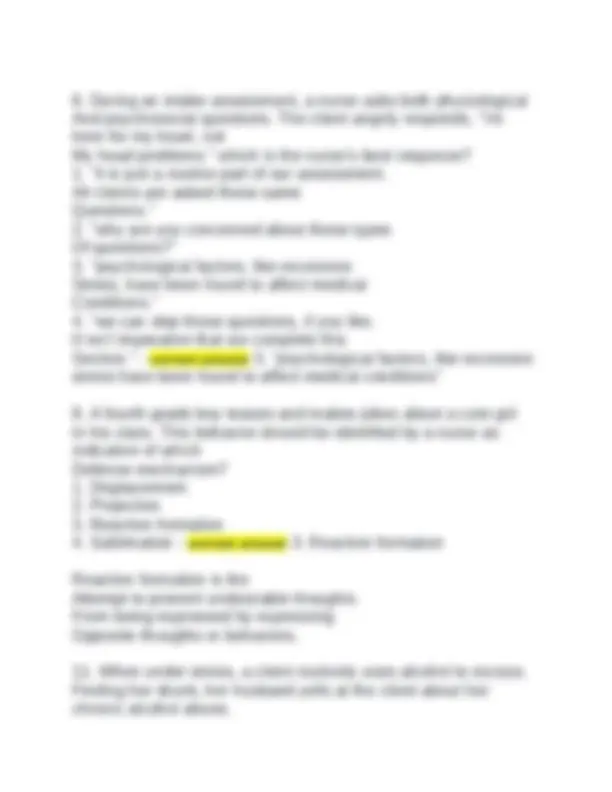
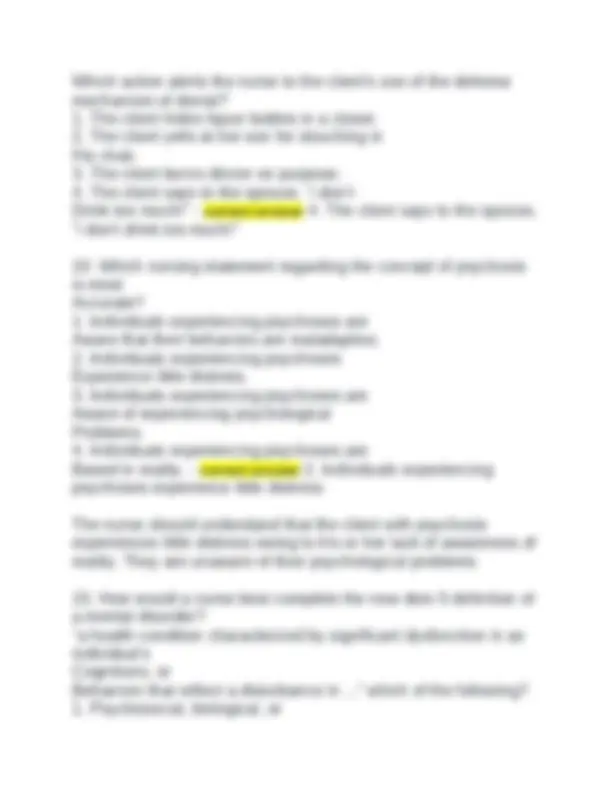
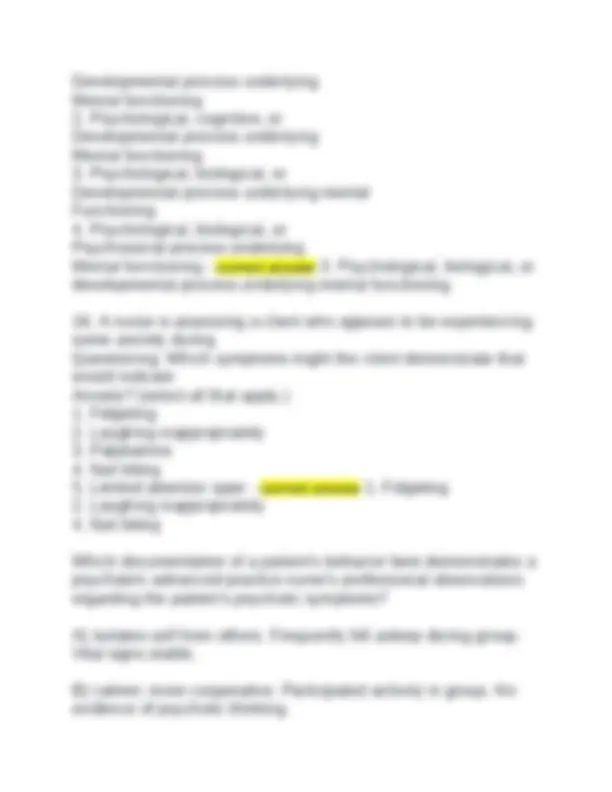
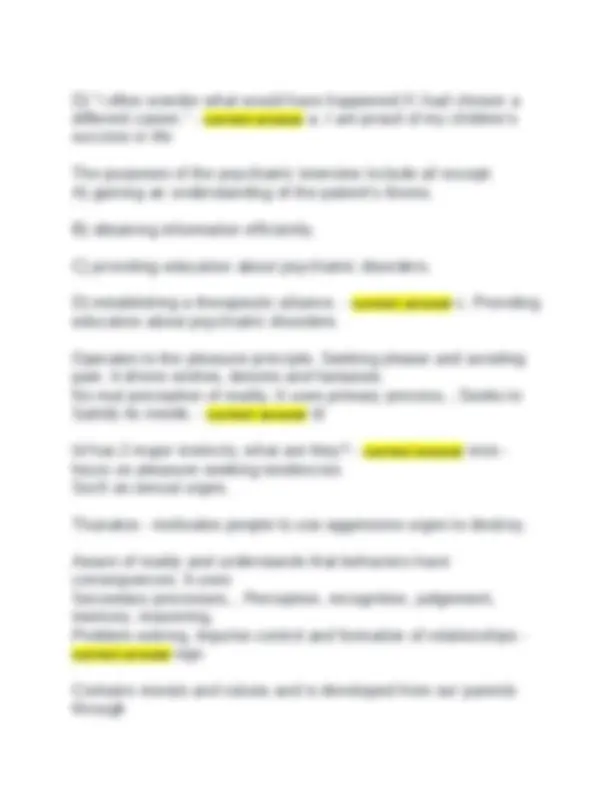
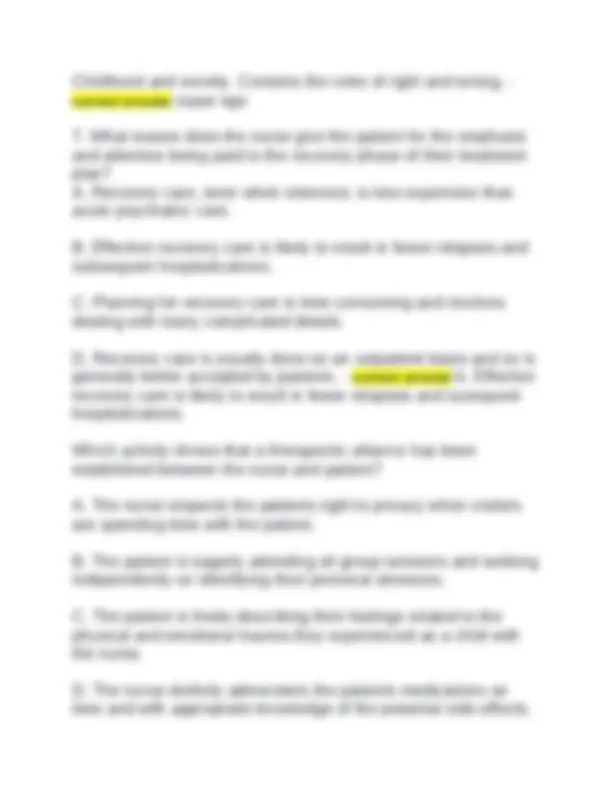
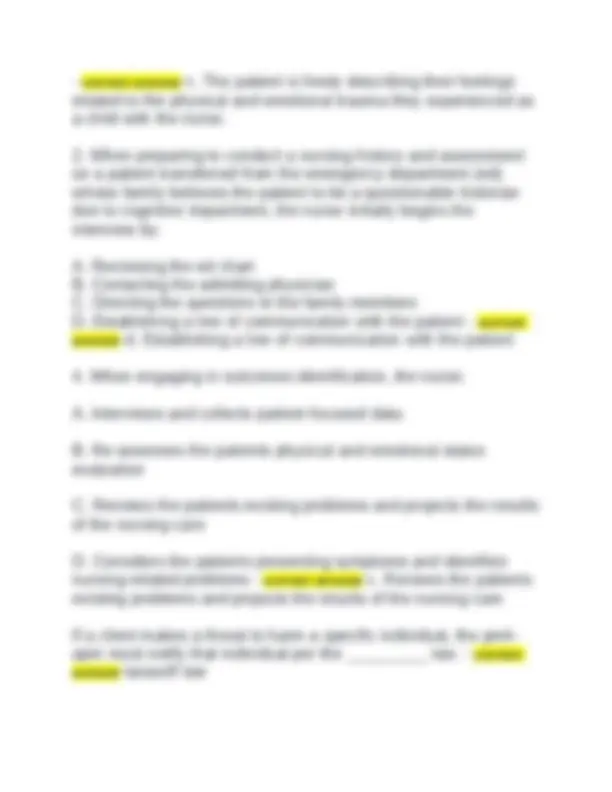
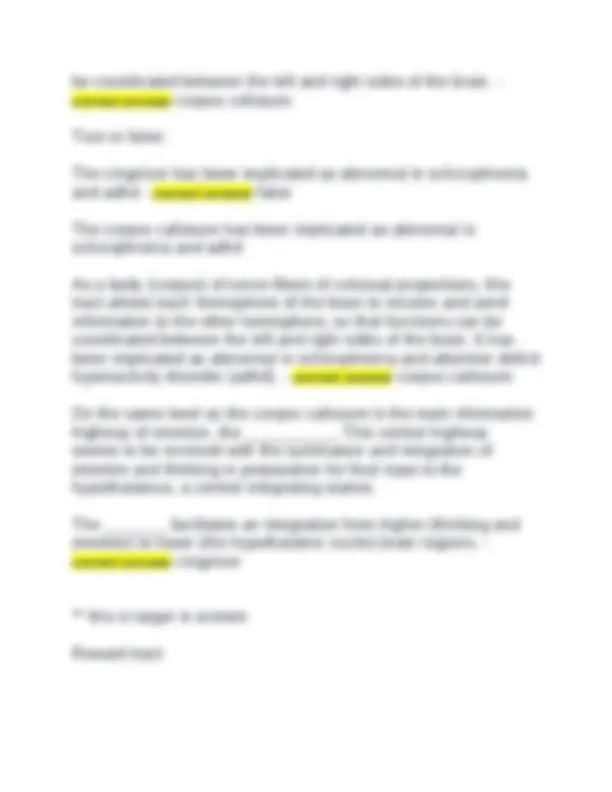
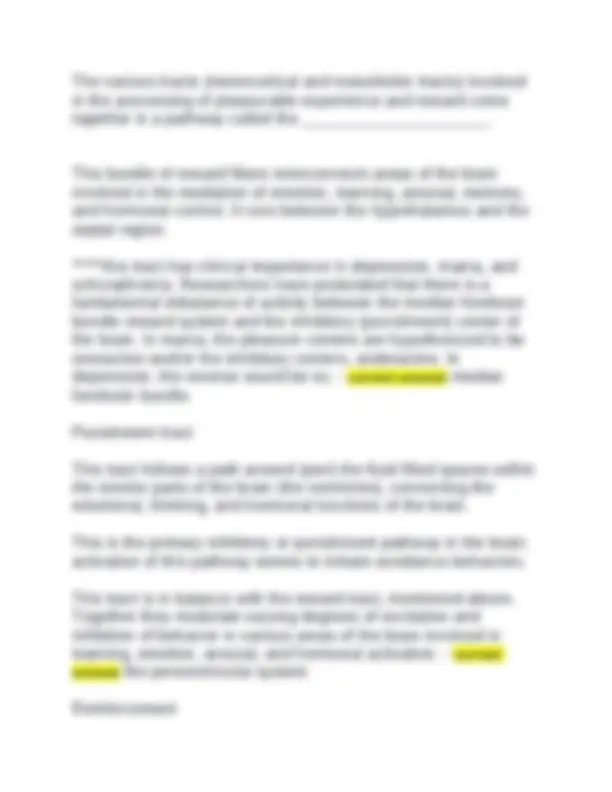
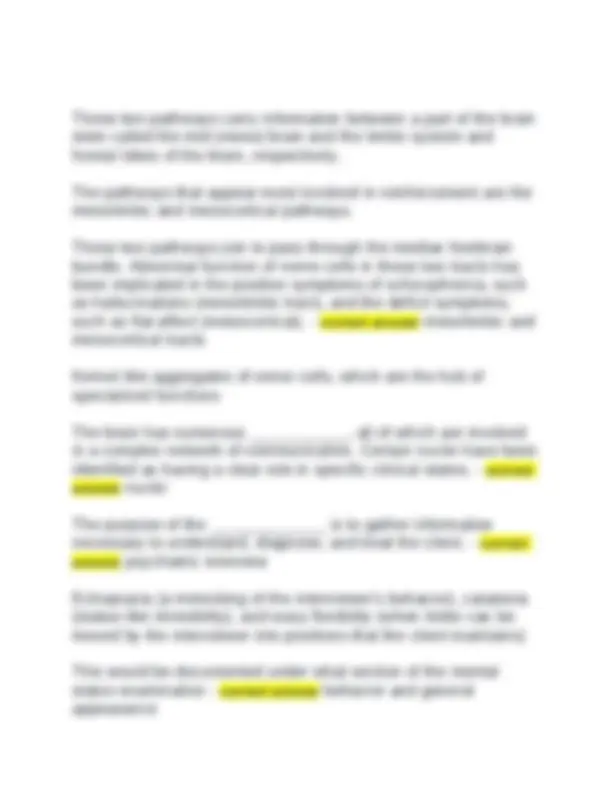
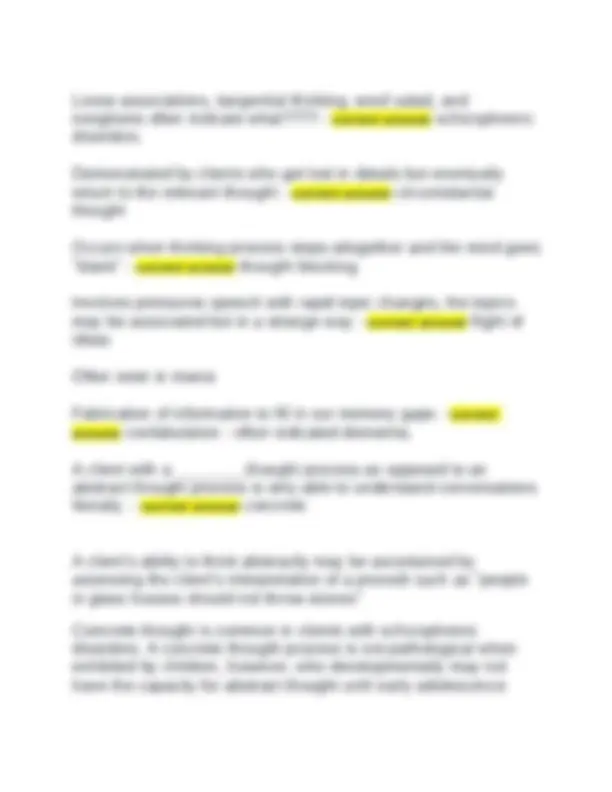
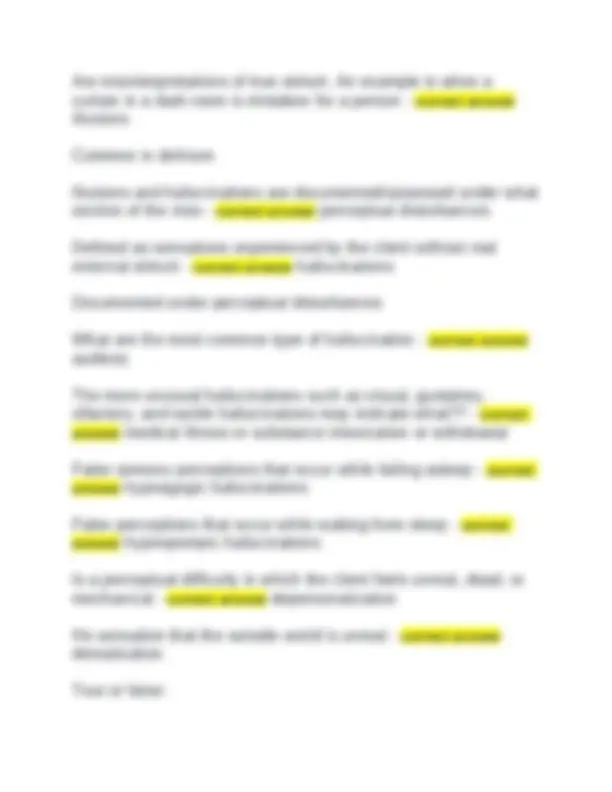
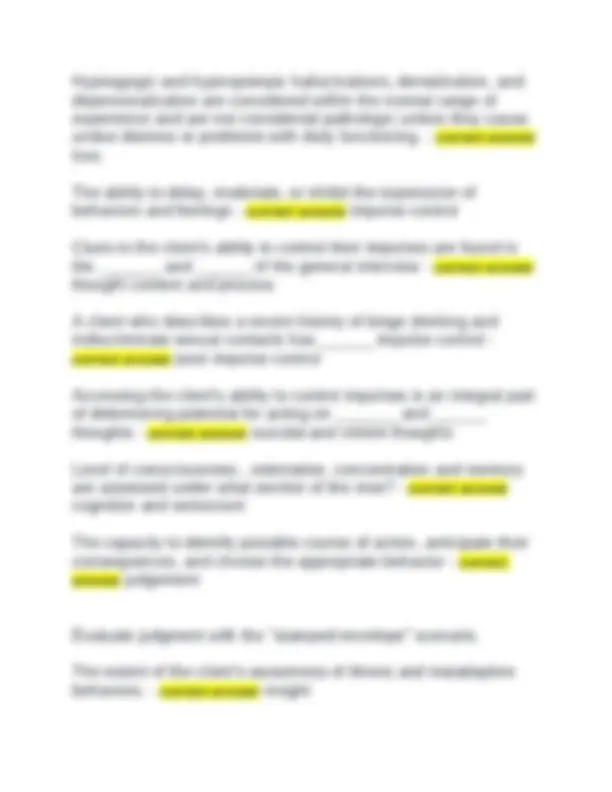
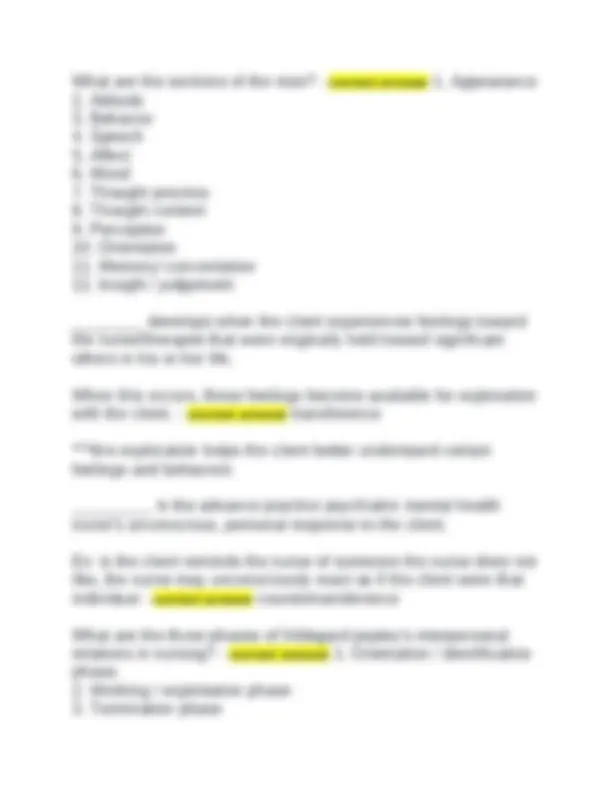
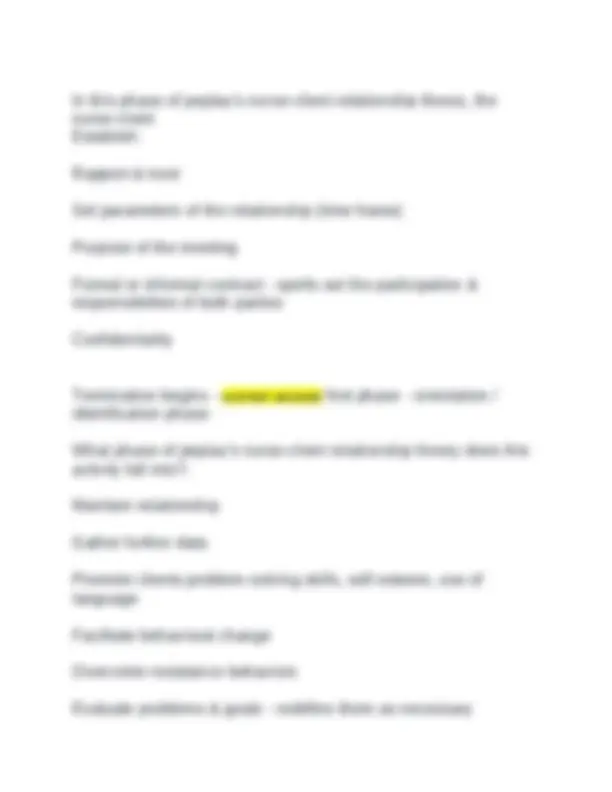
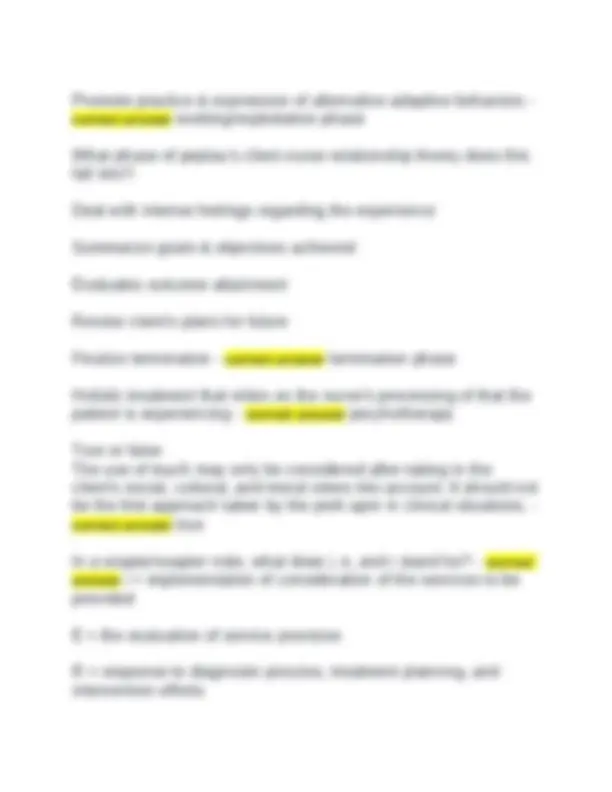
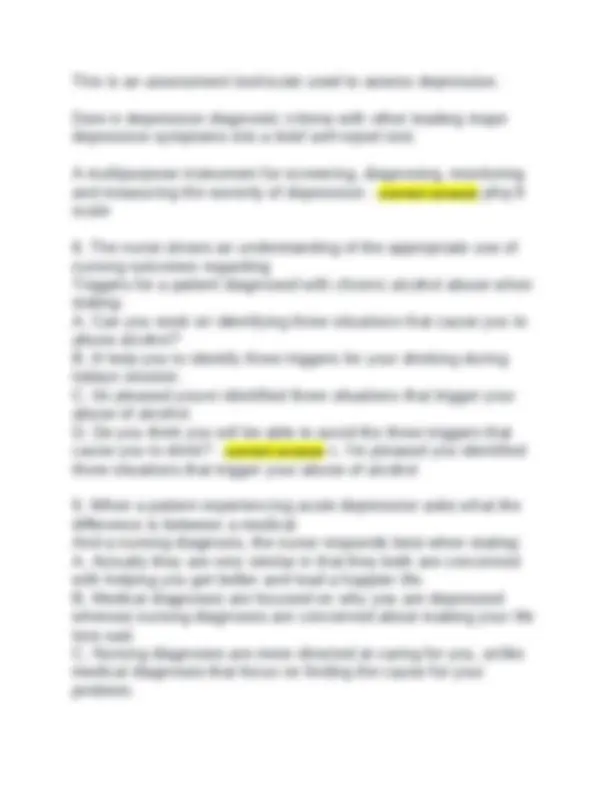
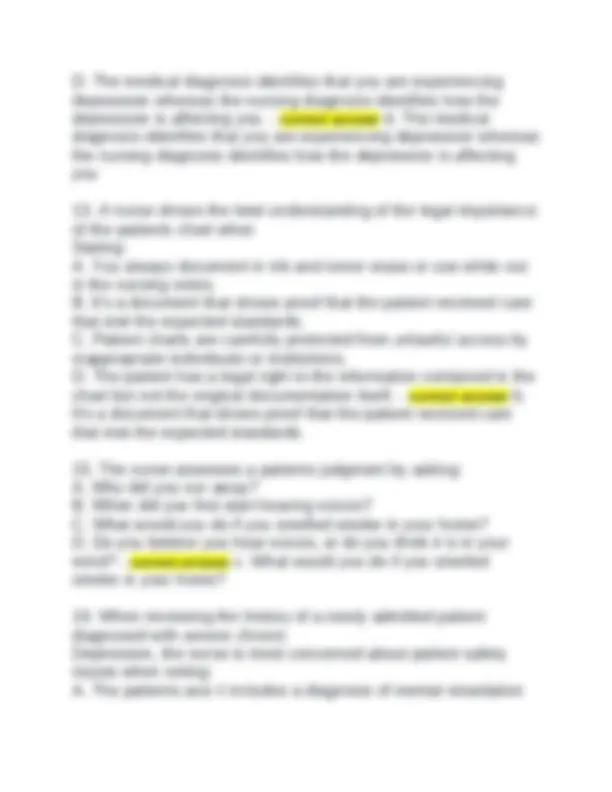
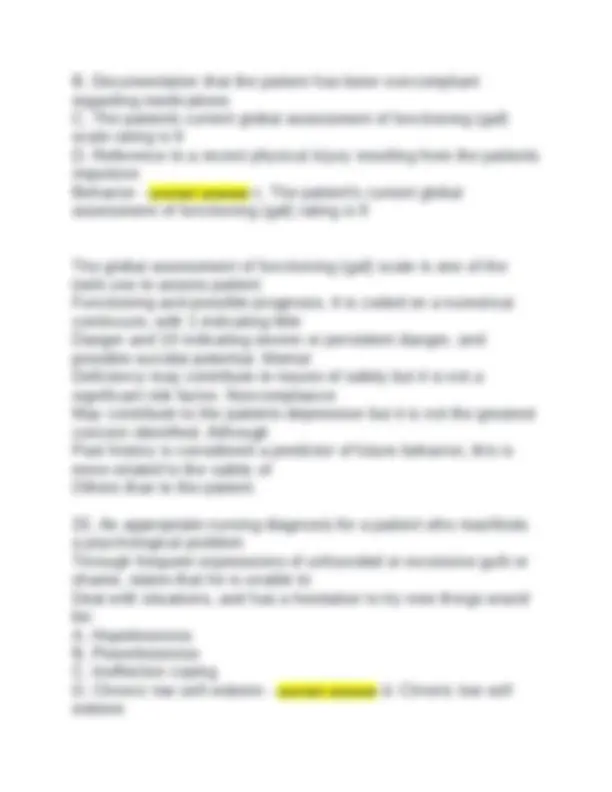
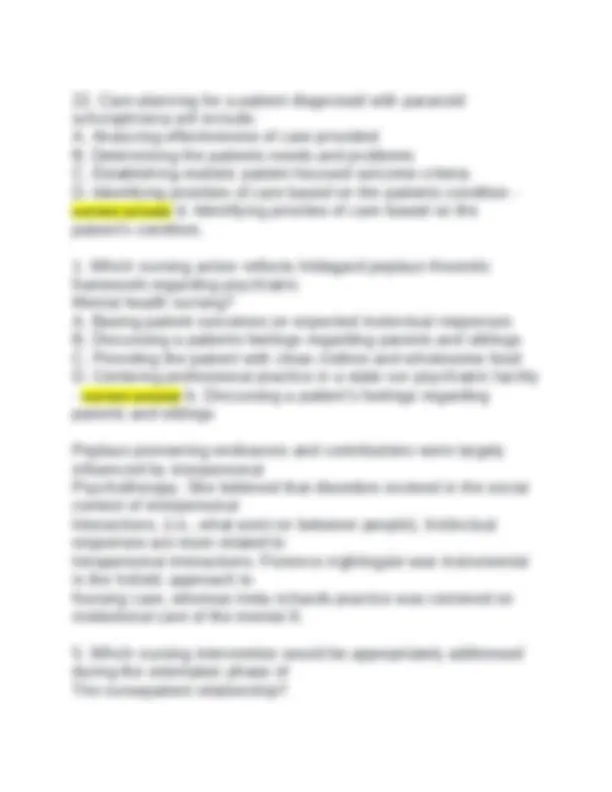
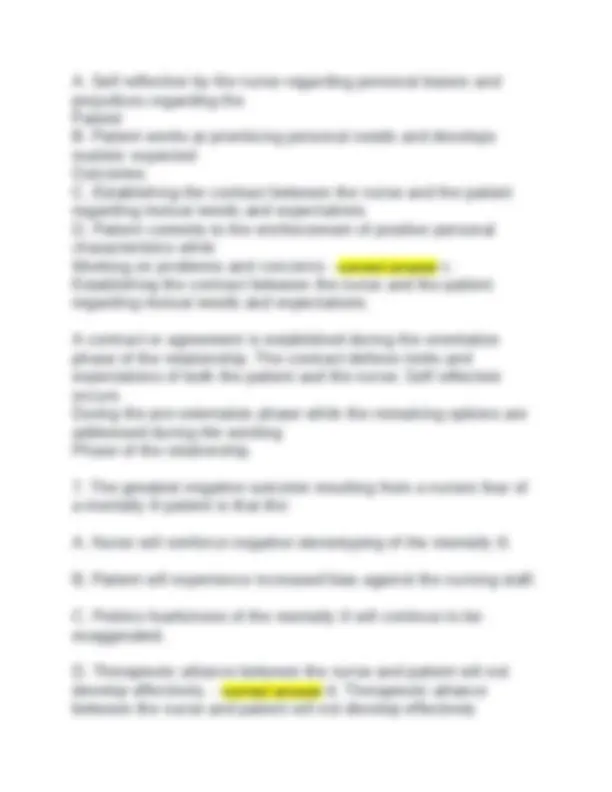
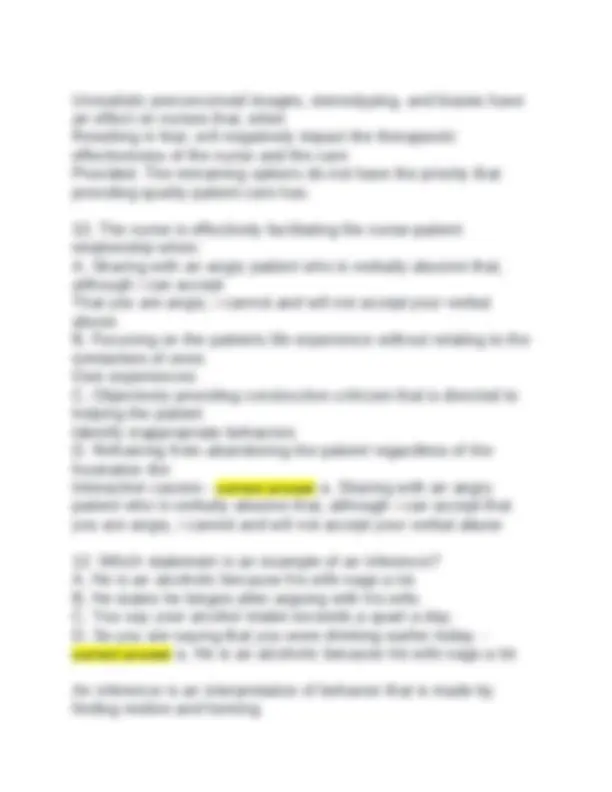
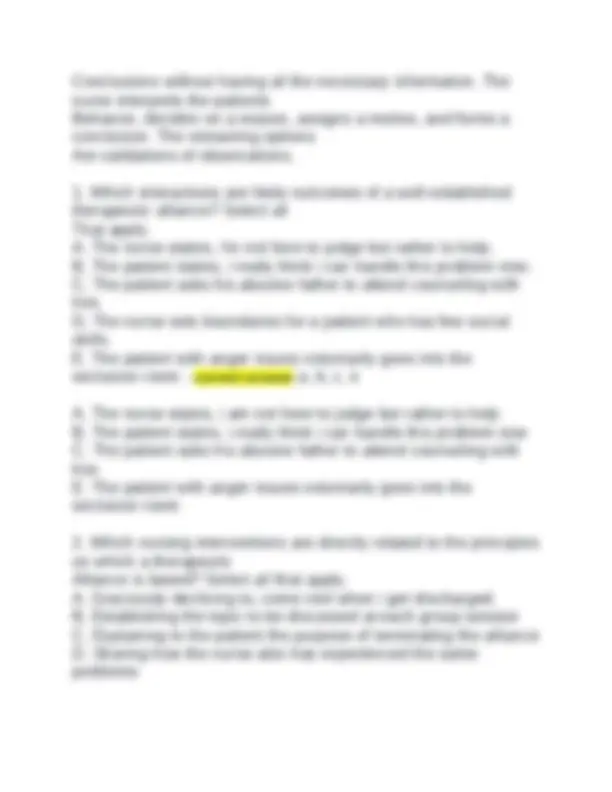
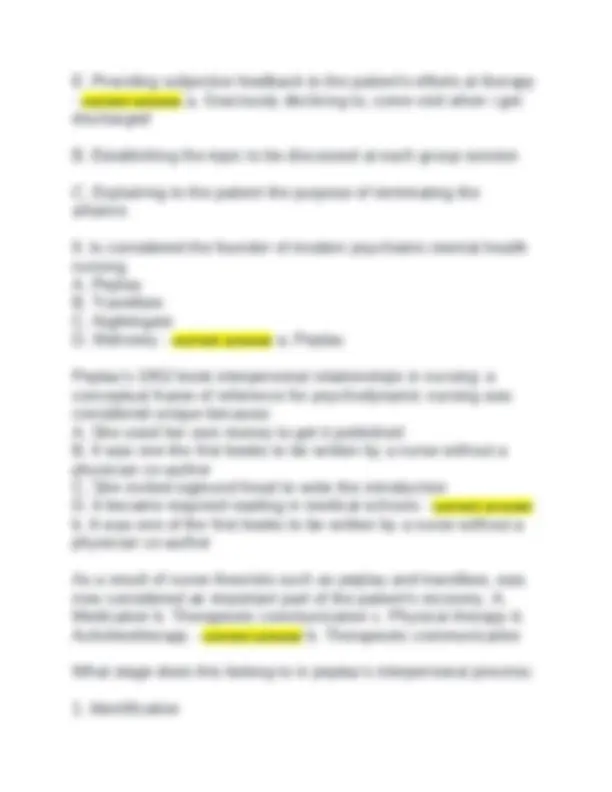
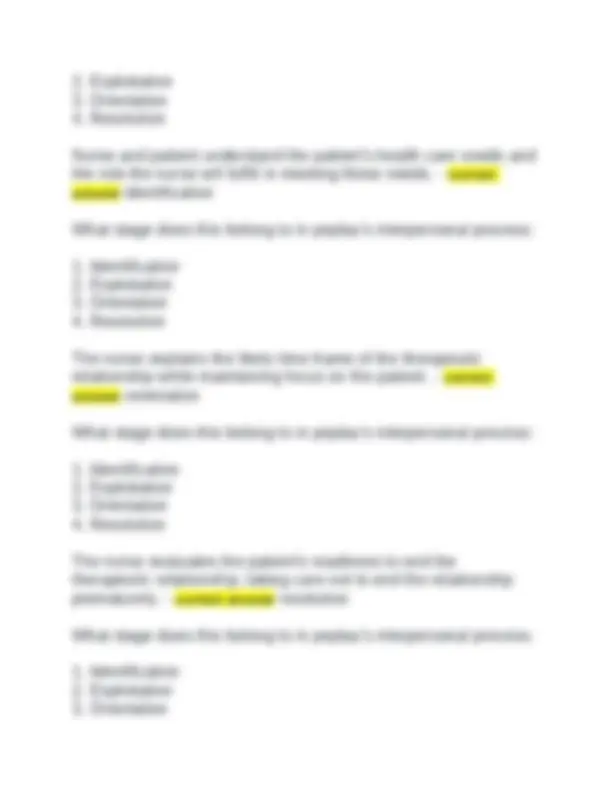
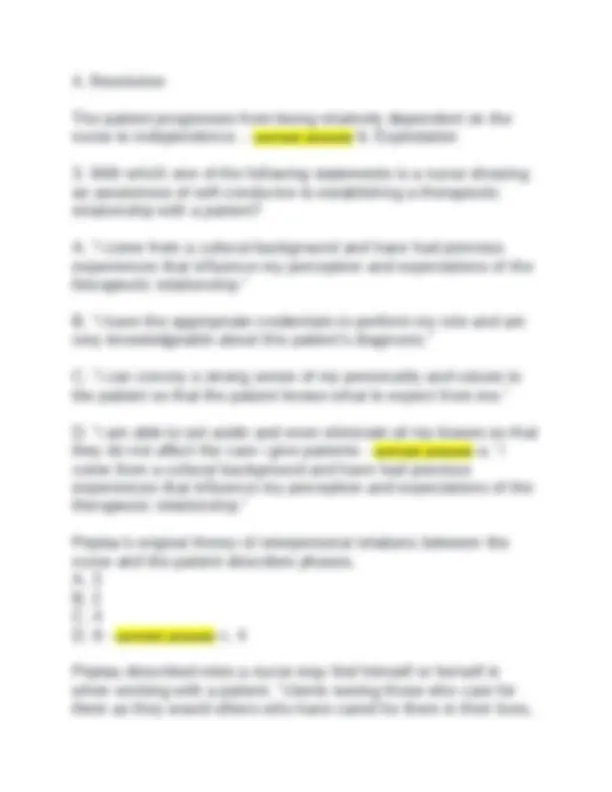
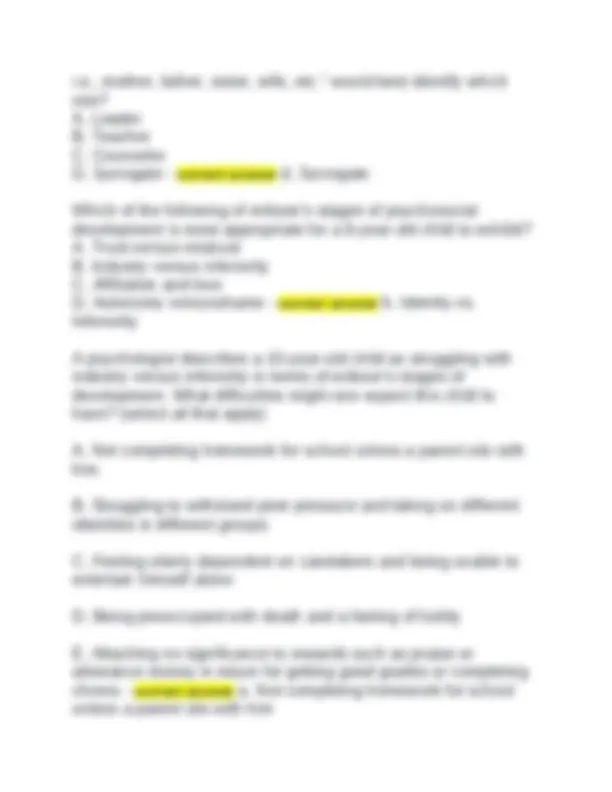
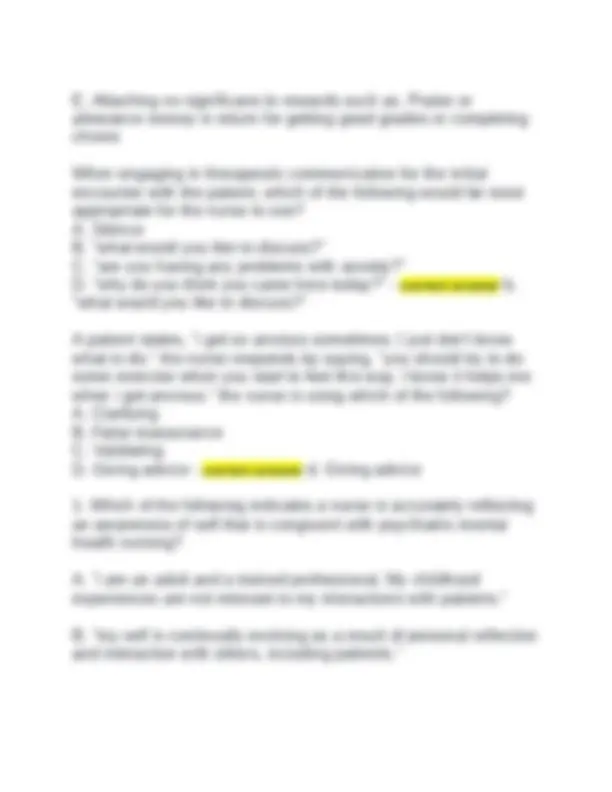
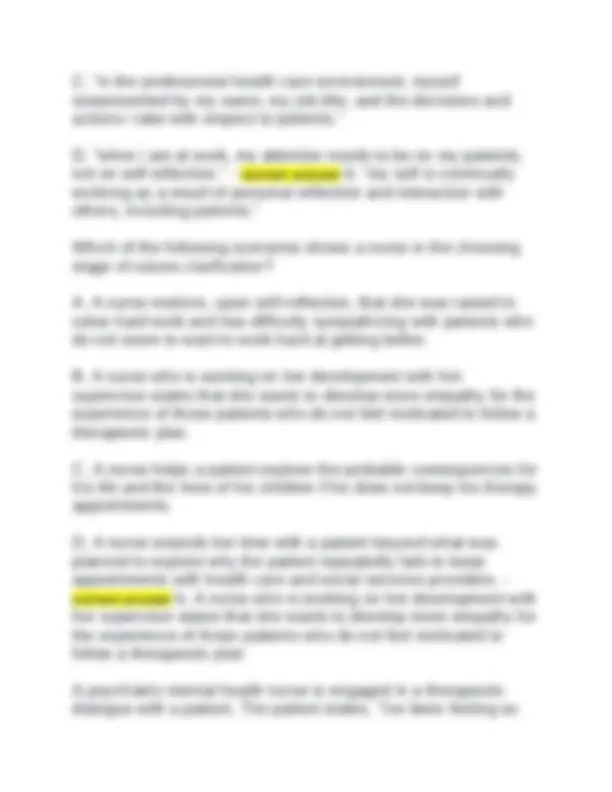
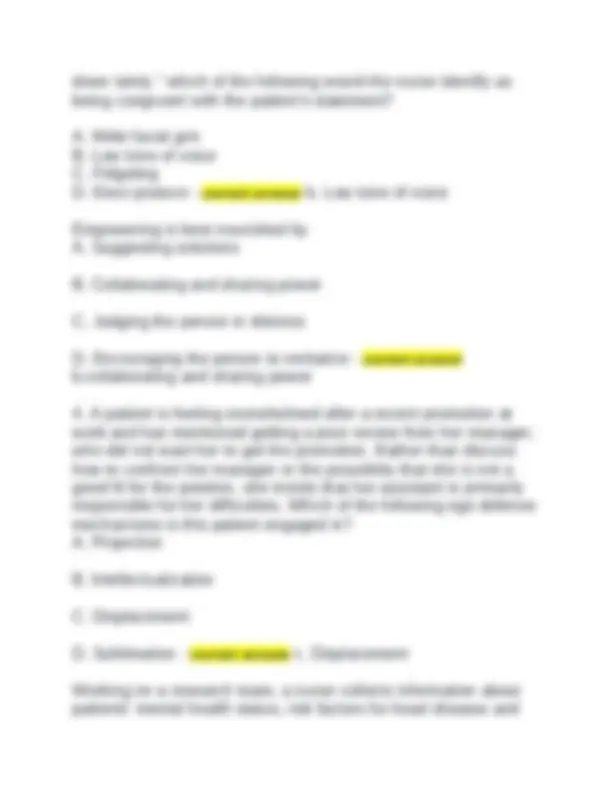
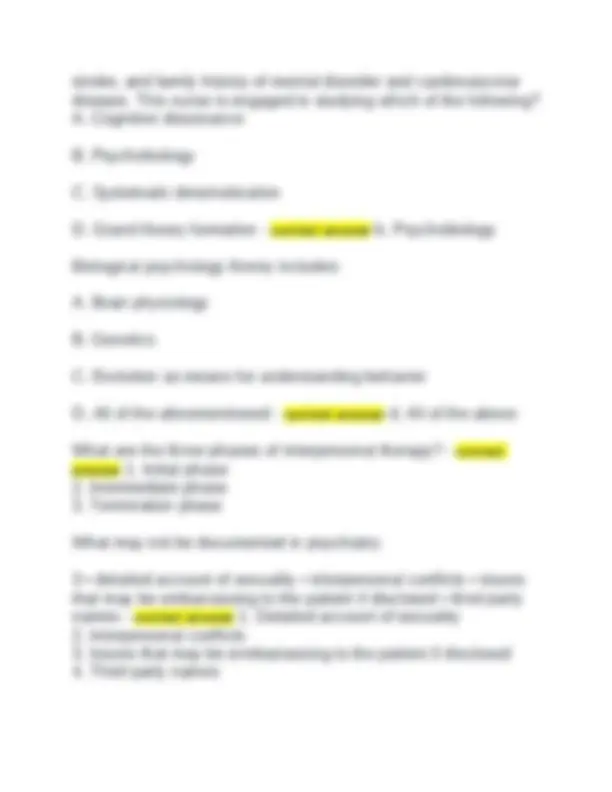
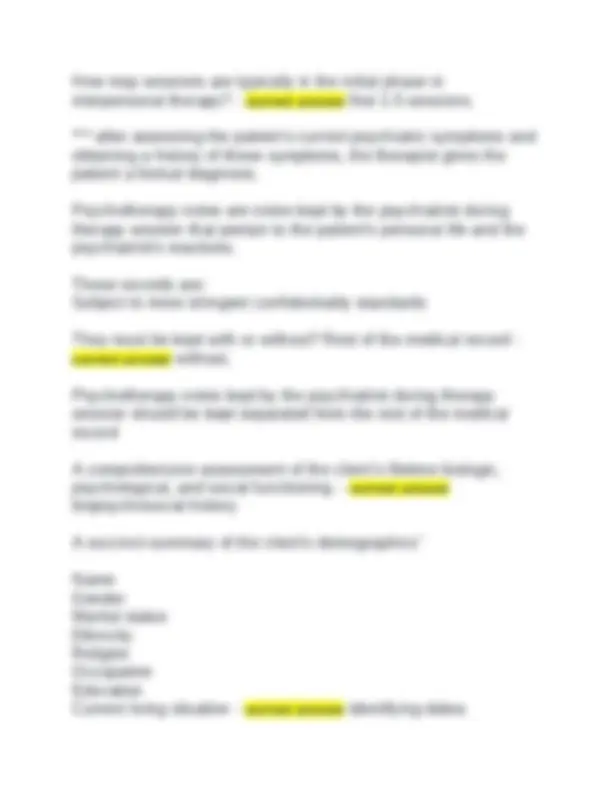
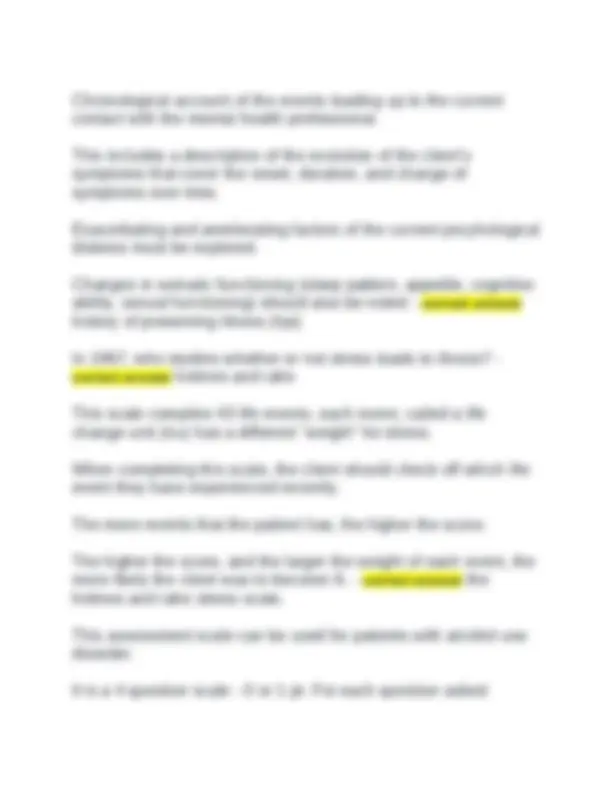
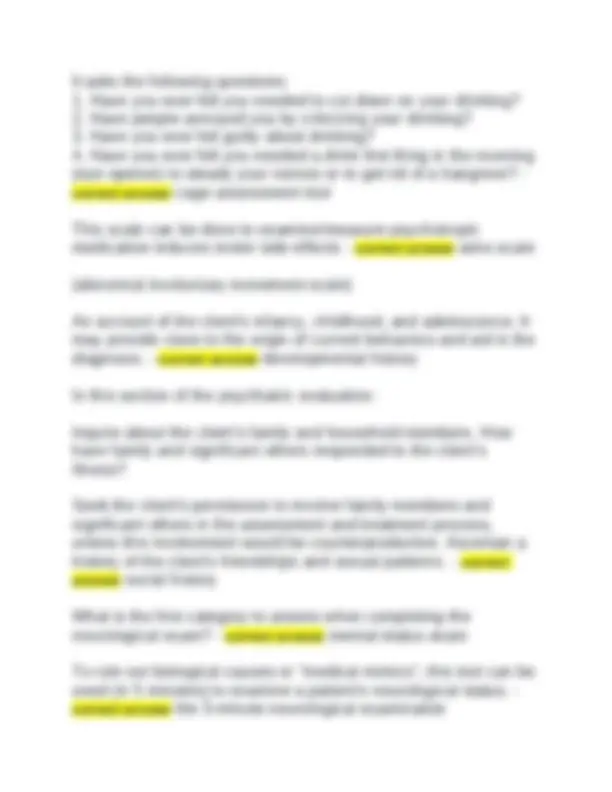
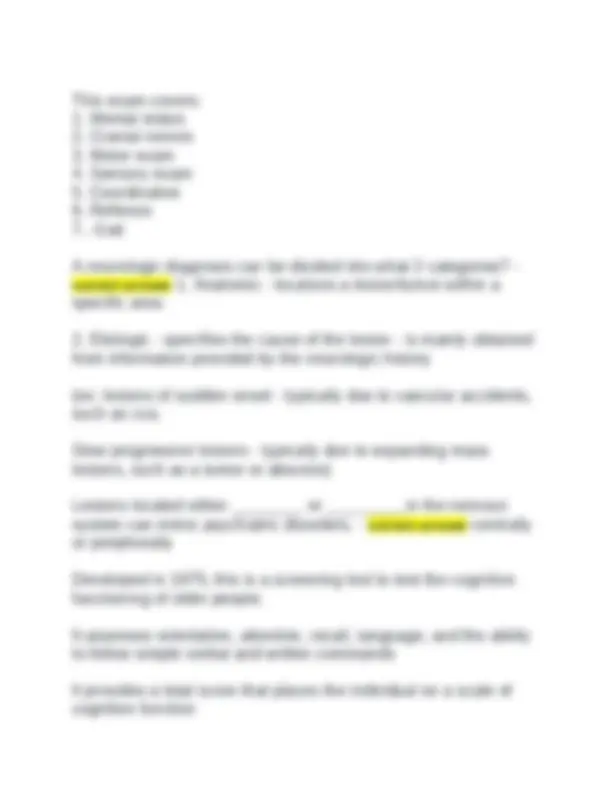
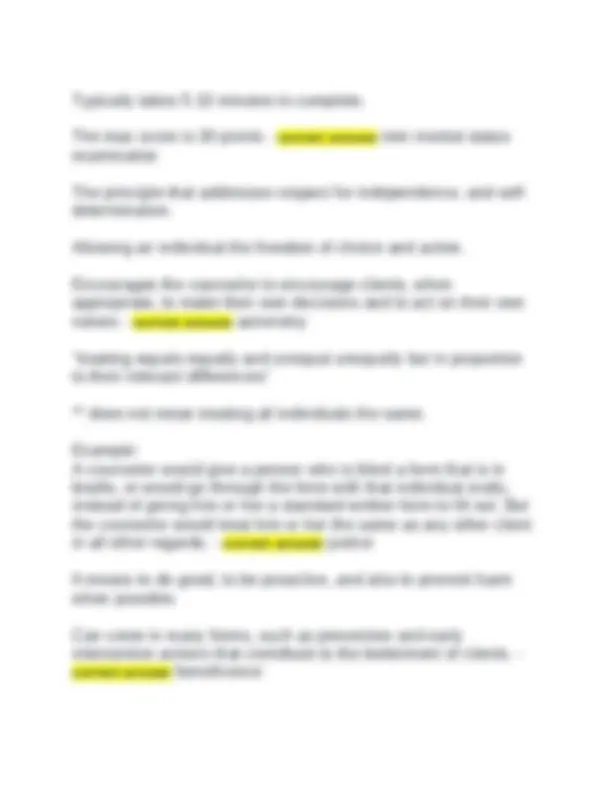
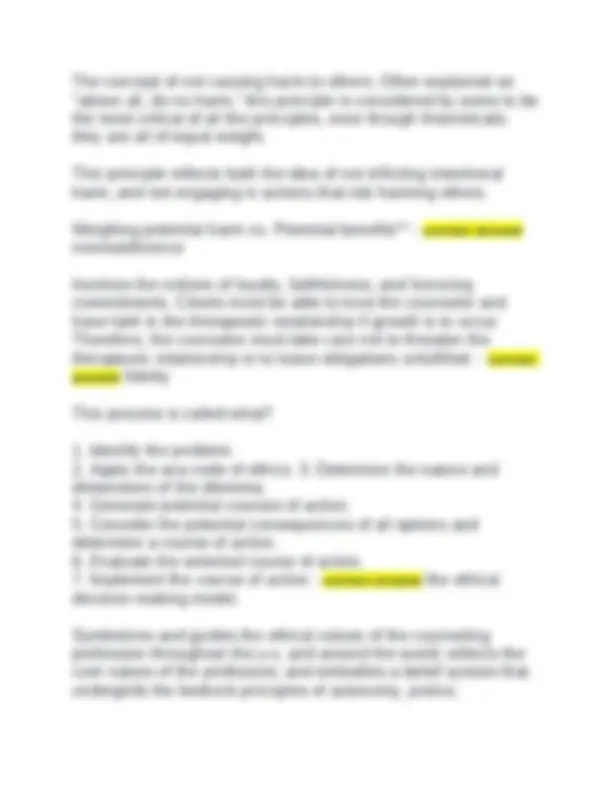
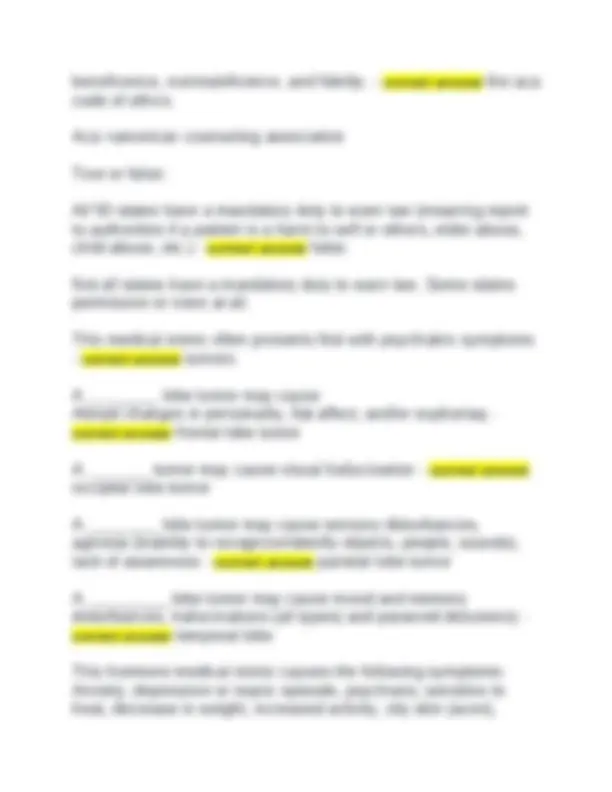
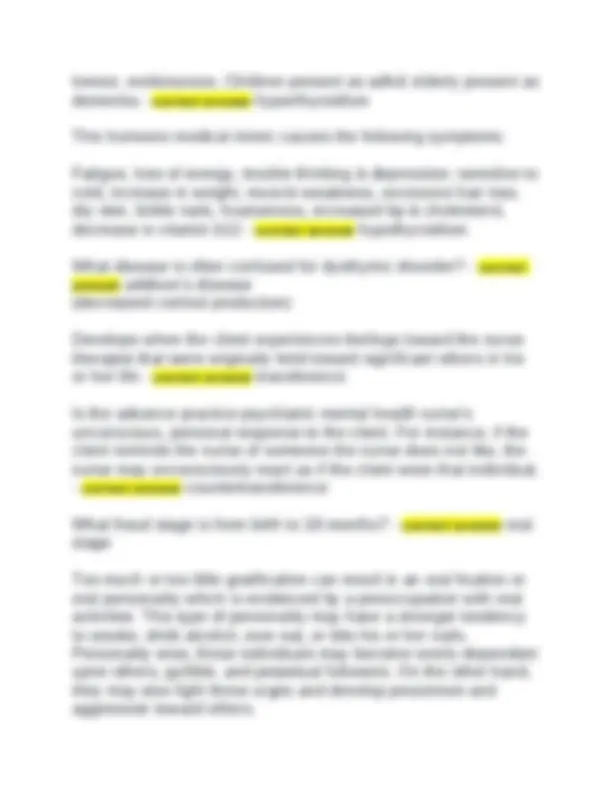
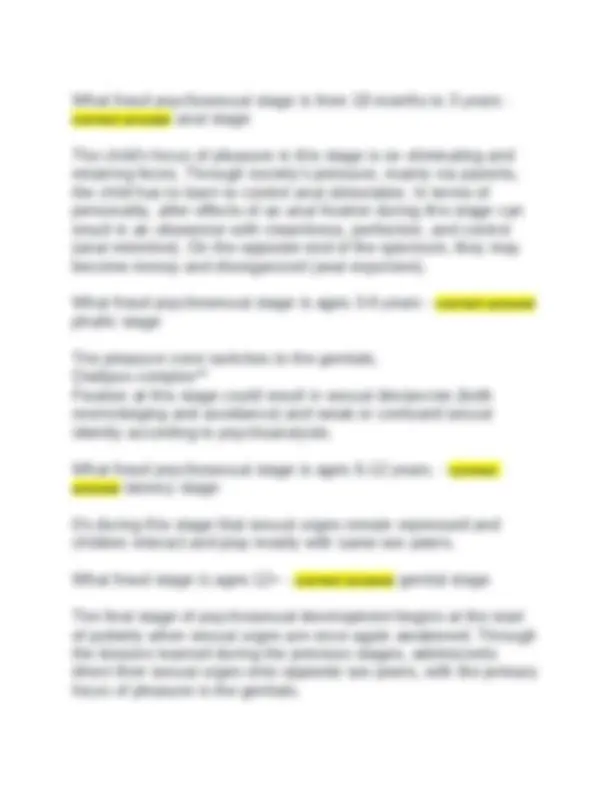
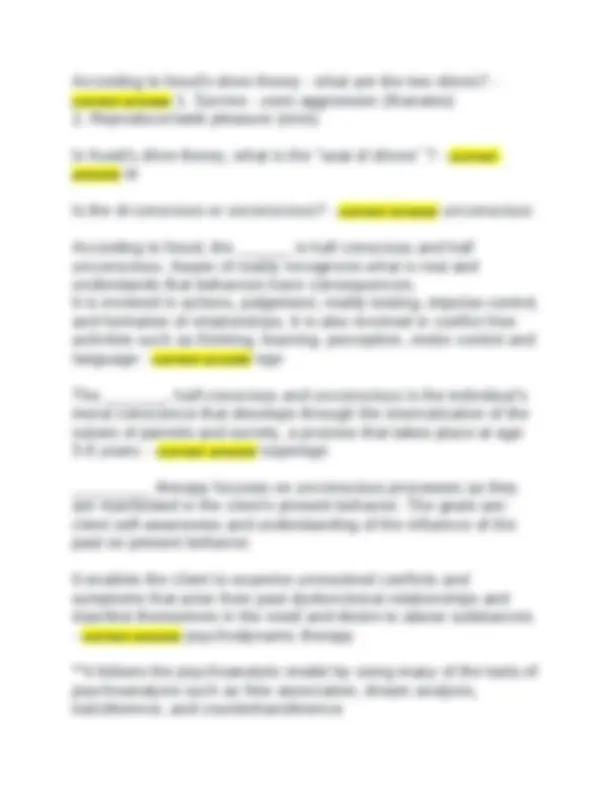
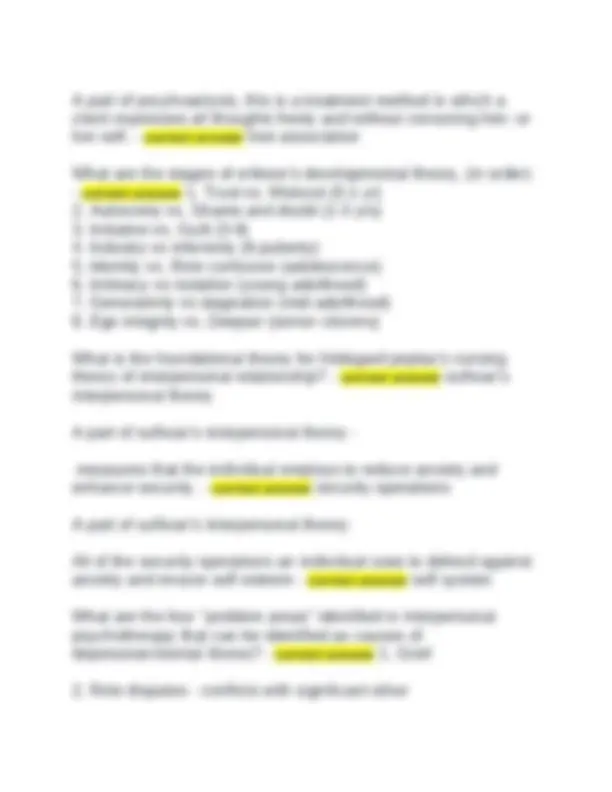
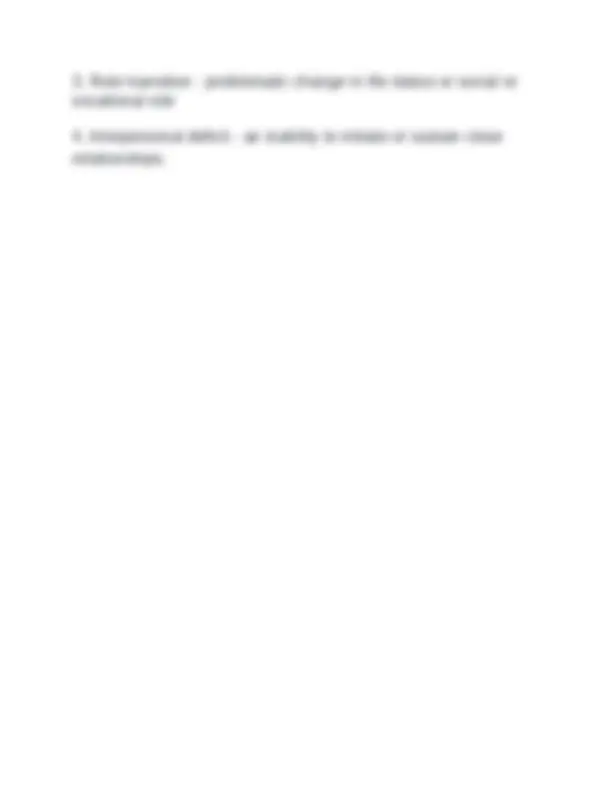


Study with the several resources on Docsity

Earn points by helping other students or get them with a premium plan


Prepare for your exams
Study with the several resources on Docsity

Earn points to download
Earn points by helping other students or get them with a premium plan
Community
Ask the community for help and clear up your study doubts
Discover the best universities in your country according to Docsity users
Free resources
Download our free guides on studying techniques, anxiety management strategies, and thesis advice from Docsity tutors
NSG 526 Clin Modal. EXAM 1 Questions and Answers. NSG 526 Clin Modal. EXAM 1 Questions and Answers.
Typology: Exams
1 / 50

This page cannot be seen from the preview
Don't miss anything!











































A syndrome characterized by clinically significant disturbance in an individual's cognition, emotion, regulation, or behavior that reflects a dysfunction in the psychological, biological, or developmental process underlying mental funcioning They are associated with significant distress, disability in social occupational, or other important activities - correct answer mental disorder/psychiatric illness Criteria that are offered as guidelines for making diagnoses - correct answer diagnostic criteria When the symptom presentation does not meet full criteria for any disorder and the symptom cause clinically significant distress/impairment what categories should be used in the diagnosis - correct answer "other specified" "unspecified" When the symptom presentation does not meet full criteria and "other specified" and "unspecified" categories are used in the diagnosis, what should the main diagnosis be corresponding to? - correct answer main diagnosis should correspond to the most predominant symptoms. Ex: bipolar disorder, unspecified The coding system that is used in the u.s. for diagnosing and documenting psychiatric disorders - correct answer icd-10-cm (international classification of disease-10th revision-clinical modification)
True or false: the diagnosis of a mental disorder is not equivalent to a need for treatment - correct answer true - clinicians should treat based on symptom severity, clinical presentation, etc.
Which action alerts the nurse to the client's use of the defense mechanism of denial?
Developmental process underlying Mental functioning
**** delusions are a part of thought content ** suicidal thoughts, homicidal thoughts, and thoughts of self- harm are all covered in thought content -- think - it is the content of your thoughts!!! *** the thought process is the way in which a client thinks. - often evidenced by their speech ***illusions and hallucinations are covered under perceptual disturbances The pmhnp has a new patient in the clinic. While looking at the materials the patient filled out in the waiting area, the pmhnp ascertains the patient has a substance abuse history. The pmhnp immediately says, "stupid drug addicts, they're so annoying. There such a waste of time. They never want to get better. "this is an example of: A) projection B) transference C) countertransference D) resistancefsaf - correct answer c. Countertransference Which comment(s) by an elderly person best indicates successful completion of developmental tasks? Select all that apply. A) "i am proud of my children's successes in life." B) "i should have given to charities more often." C) "my relationship with my father made life more difficult for me."
D) "i often wonder what would have happened if i had chosen a different career." - correct answer a. I am proud of my children's success in life The purposes of the psychiatric interview include all except: A) gaining an understanding of the patient's illness. B) obtaining information efficiently. C) providing education about psychiatric disorders. D) establishing a therapeutic alliance. - correct answer c. Providing education about psychiatric disorders Operates to the pleasure principle. Seeking please and avoiding pain. It drives wishes, desires and fantasies. No real perception of reality. It uses primary process... Seeks to Satisfy its needs. - correct answer id Id has 2 major instincts, what are they? - correct answer eros - focus on pleasure-seeking tendencies Such as sexual urges. Thanatos - motivates people to use aggressive urges to destroy. Aware of reality and understands that behaviors have consequences. It uses Secondary processes... Perception, recognition, judgement, memory, reasoning, Problem-solving, impulse control and formation of relationships - correct answer ego Contains morals and values and is developed from our parents through
Individuals can be involuntarily committed for a psychiatric evaluation for only three reasons. What are they? - correct answer 1. They are a danger to themselves due to a mental illness.
be coordinated between the left and right sides of the brain. - correct answer corpus collosum True or false: The cingulum has been implicated as abnormal in schizophrenia and adhd - correct answer false The corpus callosum has been implicated as abnormal in schizophrenia and adhd As a body (corpus) of nerve fibers of colossal proportions, this tract allows each hemisphere of the brain to receive and send information to the other hemisphere, so that functions can be coordinated between the left and right sides of the brain. It has been implicated as abnormal in schizophrenia and attention deficit hyperactivity disorder (adhd). - correct answer corpus callosum On the same level as the corpus callosum is the main information highway of emotion, the __________. This central highway seems to be involved with the summation and integration of emotion and thinking in preparation for final input to the hypothalamus, a central integrating station. The _______ facilitates an integration from higher (thinking and emotion) to lower (the hypothalamic nuclei) brain regions. - correct answer cingulum ** this is larger in women Reward tract
The various tracts (mesocortical and mesolimbic tracts) involved in the processing of pleasurable experience and reward come together in a pathway called the _____________________ This bundle of reward fibers interconnects areas of the brain involved in the mediation of emotion, learning, arousal, memory, and hormonal control. It runs between the hypothalamus and the septal region. *****this tract has clinical importance in depression, mania, and schizophrenia. Researchers have postulated that there is a fundamental imbalance of activity between the median forebrain bundle reward system and the inhibitory (punishment) center of the brain. In mania, the pleasure centers are hypothesized to be overactive and/or the inhibitory centers, underactive. In depression, the reverse would be so. - correct answer median forebrain bundle. Punishment tract This tract follows a path around (peri) the fluid-filled spaces within the interior parts of the brain (the ventricles), connecting the emotional, thinking, and hormonal functions of the brain. This is the primary inhibitory or punishment pathway in the brain; activation of this pathway seems to initiate avoidance behaviors. This tract is in balance with the reward tract, mentioned above. Together they modulate varying degrees of excitation and inhibition of behavior in various areas of the brain involved in learning, emotion, arousal, and hormonal activation. - correct answer the periventricular system Reinforcement
Observe for evidence of dysarthria (physical difficulty in vocalizing), echolalia (the repetition of the interviewer's words), perseveration (the repetition of the same words or themes), aphasia (difficulties in understanding or producing speech), and other disorders or oddities of speech. This would be documented under what section of the mental status examination - correct answer speech We ask the patient about delusions in what section of the mental status examination - correct answer thought content Intrusive thoughts or ideas that the client recognizes as "crazy" but act in accordance with anyway - correct answer obsessions Delusions involving death or destruction - correct answer nihilistic delusions Delusions involving bodily concerns - correct answer somatic delusions Believing that benign environmental occurrences relate to or have special meaning for the client - correct answer referential delusions True or false The validity of delusions should not be questioned by the interviewer; such questioning is ineffective in changing the client's beliefs and often causes alienation and anger - correct answer true Evaluation of suicidal and homicidal thoughts are under what section of the mse - correct answer thought content
What scale can be used to evaluate suicide risk - correct answer sadpersons S sex male A age <19 or >45 d depression P previous attempt E ethanol R rational thinking loss S social supports lacking O organised plan n no partner S sickness **score one point for each factor use calculated score to help determine outcome 0-2 home with appropriate follow up 3-6 admit or discharge with appropriate follow up 7-10 admit to hospital Illogical , difficult to follow shifting of ideas - correct answer loose associations When client wanders from the subject at hand to a related one and is unable to come back to the original topic - correct answer tangential thinking Tangential thinking is noted under which section of mse? - correct answer thought process Completely nonsensical combination of words - correct answer word salad Made up words - correct answer neoglisms
Are misinterpretations of true stimuli. An example is when a curtain in a dark room is mistaken for a person - correct answer illusions Common in delirium Illusions and hallucinations are documented/assessed under what section of the mse - correct answer perceptual disturbances Defined as sensations experienced by the client without real external stimuli - correct answer hallucinations Documented under perceptual disturbances What are the most common type of hallucination - correct answer auditory The more unusual hallucinations such as visual, gustatory, olfactory, and tactile hallucinations may indicate what?? - correct answer medical illness or substance intoxication or withdrawal False sensory perceptions that occur while falling asleep - correct answer hypnagogic hallucinations False perceptions that occur while waking from sleep - correct answer hypnopompic hallucinations Is a perceptual difficulty in which the client feels unreal, dead, or mechanical - correct answer depersonalizaiton He sensation that the outside world is unreal - correct answer derealization True or false:
Hypnagogic and hypnopompic hallucinations, derealization, and depersonalization are considered within the normal range of experience and are not considered pathologic unless they cause undue distress or problems with daily functioning. - correct answer true. The ability to delay, modulate, or inhibit the expression of behaviors and feelings - correct answer impulse control Clues to the client's ability to control their impulses are found in the _______ and ______ of the general interview - correct answer thought content and process A client who describes a recent history of binge drinking and indiscriminate sexual contacts has ______ impulse control - correct answer poor impulse control Accessing the client's ability to control impulses is an integral part of determining potential for acting on _______ and ______ thoughts - correct answer suicidal and violent thoughts Level of consciousness , orientation, concentration and memory are assessed under what section of the mse? - correct answer cognition and sensorium The capacity to identify possible course of action, anticipate their consequences, and choose the appropriate behavior - correct answer judgement Evaluate judgment with the "stamped envelope" scenario. The extent of the client's awareness of illness and maladaptive behaviors. - correct answer insight